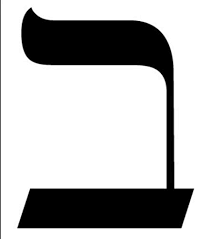Bereshit 5782 – Interpretation
The Quran refers to Jews as “People of the Book,” but the truth is we are really “People of the Interpretation of the Book.” You would get a very distorted picture of Judaism if you read the Hebrew Bible (“Old Testament” for Christians) and tried to assume you knew what Judaism was about.
My favorite example of that is the principle of lex talionis, aka “an eye for an eye.” Some Christians have the erroneous notion that Judaism must be a very harsh, perhaps even barbaric faith with rules in our Bible that say such things. If someone breaks your arm, you’re supposed to break their arm? But the rabbis in the Talmud interpret that verse very differently. They say an eye for an eye means if you put someone’s eye out, it means you have to give them an eye’s worth of compensation, including time lost from work, medical expenses, pain and suffering, etc. In other words, more or less exactly what modern tort law says. Where you do you think modern laws got those ideas?
This week we’re starting over with our annual cycle of reading the Torah, starting at the very beginning of the book of Genesis. “In the beginning…” But even that simple well-known phrase is an interpretation. The Hebrew of the Torah has no vowels. The first word of the Torah, בראשית could be translated “in the beginning” vowelized one way, and simply “in beginning” if vowelized a different way. And the traditional way of saying it is without the definite article.
So what’s the difference between “in the beginning” and “in beginning?” In beginning could mean there have been other beginnings. Or this beginning is just our way of telling the story, there are others. But it is much more ambiguous and open to interpretation without the definite article.
It turns out the interpretation of the Bible begins even before the first letter – it begins with the first stroke that a sofer (scribe) makes when embarking on writing a new sefer Torah. My friend Jamie Shear, who’s a sofer, shared a teaching from Rabbi Ari Bergmann on a bike ride this morning.
The first letter of the Torah, bet, is made up of three lines – two fat horizontal lines that are parallel to each other, and a thin vertical line connecting them. The horizontal lines represent heaven and earth – as parallel lines, they would never intersect or connect, but for the thin vertical line, which represents Torah, the link between heaven and earth! So even the first brushstroke a sofer makes when writing a Toah – the wide horizontal line at the top of the letter bet – is interpreted as representing something, in this case representing heaven.
One of the greatest praises you an offer a rabbi or any student of the Torah is that they came up with a hiddush, a novel interpretation of something in the Torah. With so many very bright people studying the Torah for over 2,000 years, it’s not easy to find something new.
As we start out on a new year, may we all find new interpretations of the Torah that truly make it our own, and relevant to our lives today!


